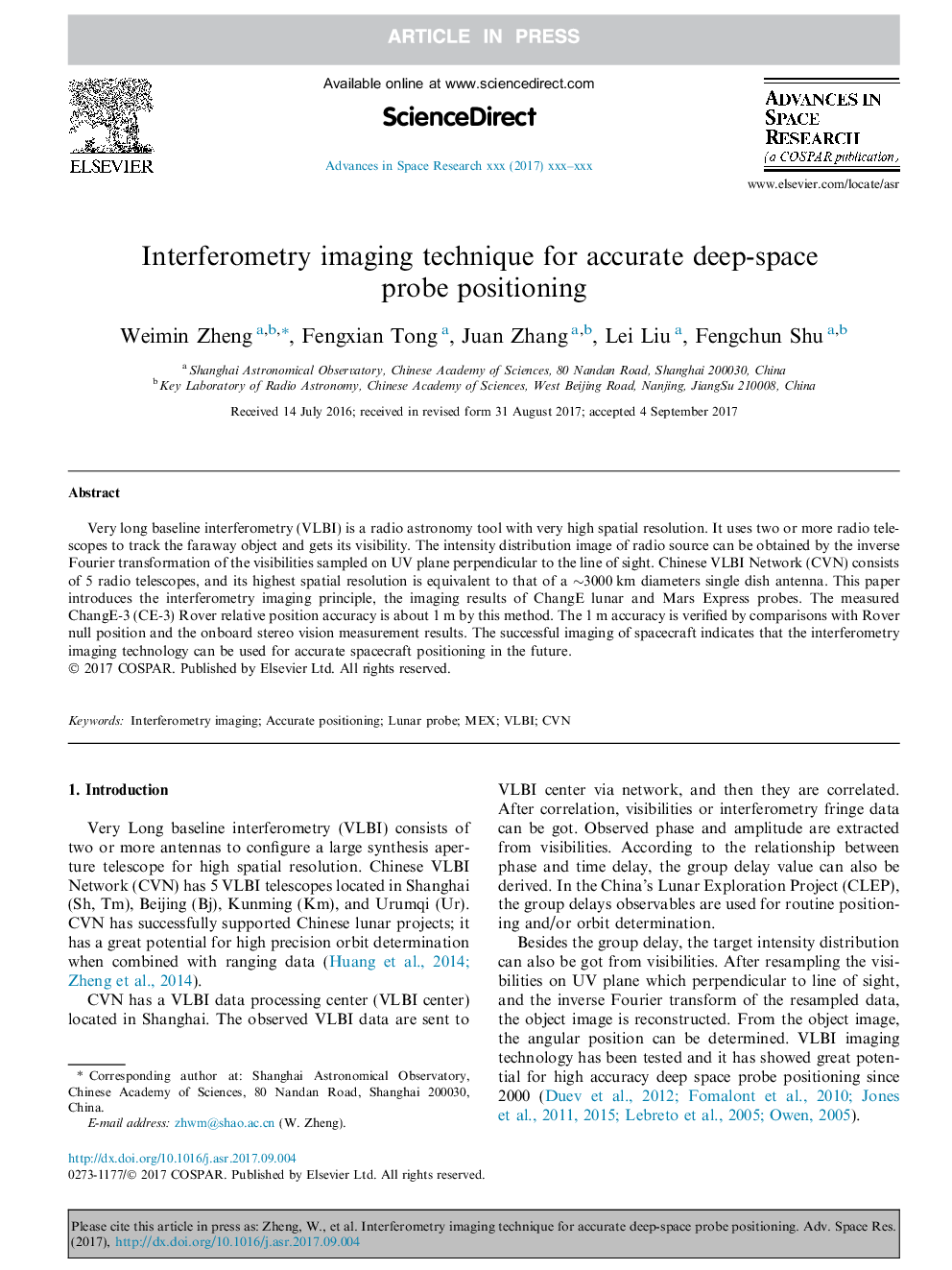| Article ID | Journal | Published Year | Pages | File Type |
|---|---|---|---|---|
| 8132567 | Advances in Space Research | 2017 | 8 Pages |
Abstract
Very long baseline interferometry (VLBI) is a radio astronomy tool with very high spatial resolution. It uses two or more radio telescopes to track the faraway object and gets its visibility. The intensity distribution image of radio source can be obtained by the inverse Fourier transformation of the visibilities sampled on UV plane perpendicular to the line of sight. Chinese VLBI Network (CVN) consists of 5 radio telescopes, and its highest spatial resolution is equivalent to that of a â¼3000Â km diameters single dish antenna. This paper introduces the interferometry imaging principle, the imaging results of ChangE lunar and Mars Express probes. The measured ChangE-3 (CE-3) Rover relative position accuracy is about 1Â m by this method. The 1Â m accuracy is verified by comparisons with Rover null position and the onboard stereo vision measurement results. The successful imaging of spacecraft indicates that the interferometry imaging technology can be used for accurate spacecraft positioning in the future.
Keywords
Related Topics
Physical Sciences and Engineering
Earth and Planetary Sciences
Space and Planetary Science
Authors
Weimin Zheng, Fengxian Tong, Juan Zhang, Lei Liu, Fengchun Shu,
